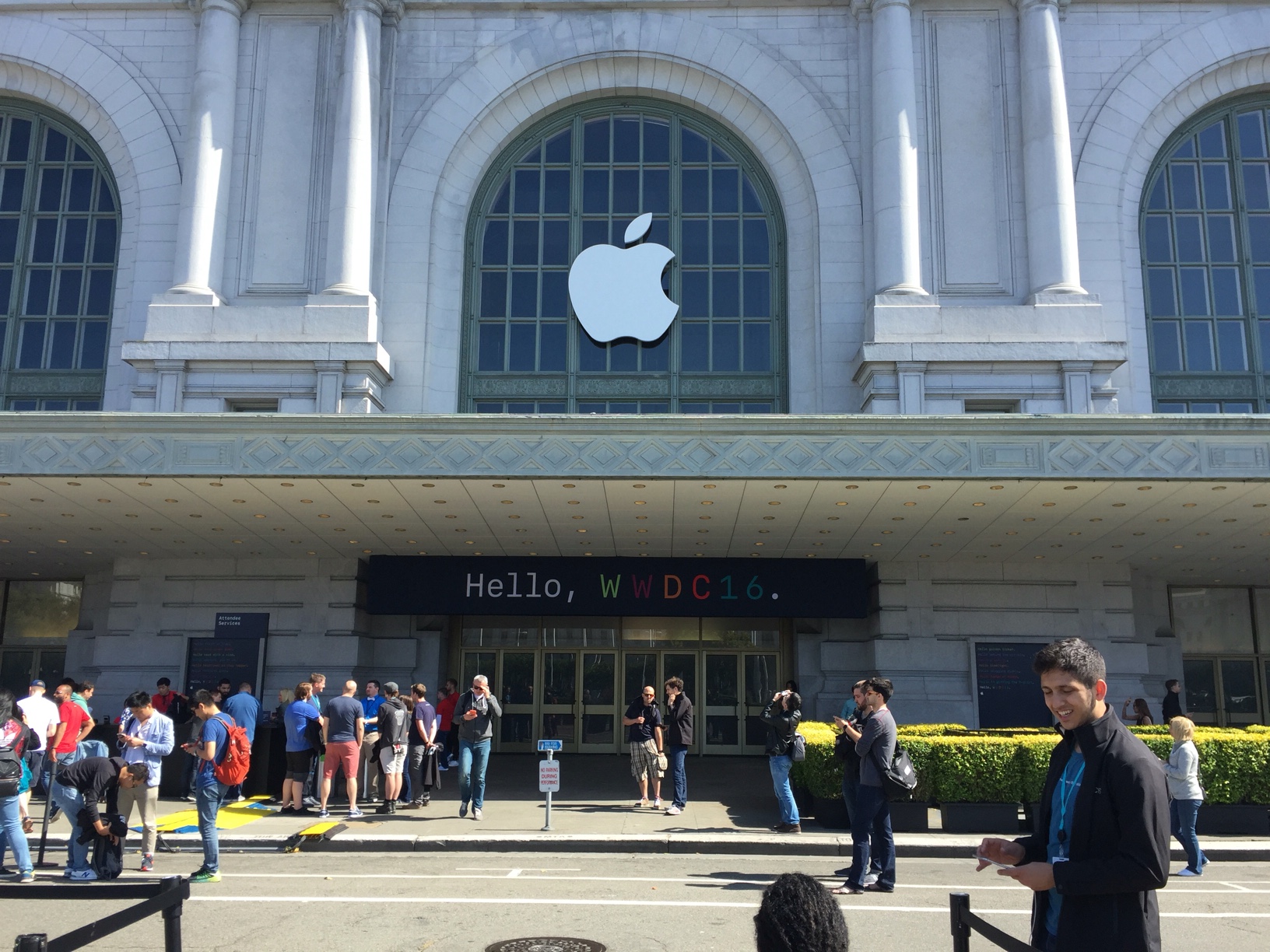Recapping WWDC2016
A long-standing tenant of the Apple ecosystem has been that it just works. Now that the ecosystem includes a variety of platforms and devices, their marketing department may want to consider this update: They just work…together. This concept was fully reinforced at Apple’s Worldwide Developer Conference this year with the newly announced changes to pre-existing technologies.
Watch For Changes
While developers always expect refinement with each new version of an operating system, we are sometimes greeted with a major pivot. This is true with the newly announced watchOS 3. The user interaction launching apps sees a dramatic change with influence from the desktop world. The side button on the watch will display the Dock showing apps running in the background. This change removes the need for developers to develop a separate view of the app called a Glance. Background apps will also load much faster, removing much of the waiting currently seen. Pulling inspiration from iOS, Apple Watch users can now swipe up on the screen to see the Control Center with common settings.
Apple has also been hard at work on their own apps as well. Many apps have been refined to reduce interaction for common user flows. The Workout app is a great example where users can quickly launch new workouts and view workout details in fewer touches. In addition to refined UX, nearly all Apple apps are accompanied by a complication (those little bits of information on a watch face next to the current time) to place on watch faces. This is great since watchOS 3 allows multiple watch face configurations and easy swiping between them. Lastly, the new Breathe app will guide your meditation time and bring peace of mind to your Apple Watch purchase.
For developers looking to create a watchOS app, Apple has exposed a deeper level of control to Apple Watch features. The Digital Crown is no longer tied to only Apple-defined user interface elements so developers can access Digital Crown movements directly to empower custom UI. The same level of control also comes to the touch screen, heart rate monitor, accelerometer, and gyroscope. Many frameworks that iOS devs are familiar with have been exposed on watchOS, including 2D sprite-based animation, 3D animation, and direct use of Apple’s iCloud for online storage. This is a floodgate of opportunity for developers. For those who were hesitant to get into watchOS, Apple is clearly saying the time is right with watchOS 3.
From The Couch
Apple TV has always been a unique platform for Apple. It’s been around for nearly 10 years, yet only opened up to all developers less than 12 months ago. It’s clear with the WWDC-announced tvOS 10.0 (the name coinciding with iOS releases) that Apple is ready to take Apple TV from a hobby to a pillar of its product offerings.
Apple TV is still a TV-connected device, so video is a primary driver for users. Cord-cutters have loved Apple TV for apps like Netflix, HBO, and the MLB network. Enjoying new content is even easier with single sign-on using your cable or satellite provider’s credentials. Say goodbye to visiting web sites and entering codes for each new app.
Another push for Apple and its connected platforms is HomeKit. Introduced in iOS a couple years ago, HomeKit allows a consistent interface to home automation vendors. With tvOS taking part, you now have a central hub to internet-enabled lighting, climate control, and home security. You can even call on Siri through the Apple TV remote to dim the lights before the movie starts.
Like watchOS, tvOS is gaining access to many tools from iOS to bring more advanced apps to the platform. Interacting with those apps and games is made easier with a new Apple TV Remote app for iPhone. The app replicates the buttons and trackpad on the included Apple TV remote to enable your friends to grab their phone and join in multiplayer gaming.
By Any Other Name
The cornerstone of Apple’s OS lineup has always been Mac OS X. To keep in line with its OS cousins, a name change was in order: macOS. However, this was hardly the only news for Apple’s desktop OS.
The big news for macOS users is the introduction of Siri on desktop. iPhone users have loved Siri for web searches and for accomplishing common tasks. Those same features come to macOS (with some great additions). Asking Siri about things like sports schedules will produce the same results as iOS, but these results can be “pinned” to the Notification Center menu so you can reference later. The pinned results will also be updated automatically. Siri on macOS also brings options for searching for files and images.
Last year Apple introduced Handoff, the technology that links your iPhone to your Mac and allows apps to literally “hand off” to one device. Let’s say you are at lunch looking at a site on your iPhone. When you get back to your Mac, you can click the Handoff icon and bring up that same page on your Mac. This phone and computer collaboration continues in the next version of macOS with Universal Clipboard. Did you get a message from someone on your iPhone but need it on your Mac? Simply copy it on your phone and it’s now available on your Mac to paste.
The Apple Watch also now forms a symbiotic relationship with your Mac in the form of Auto Unlock. Simply walk up to your Mac wearing your Apple Watch and your Mac will unlock for you—no more password entry. And if you need to step away from your Mac, it will lock for you as well.
The Message Is Clear
While games and social networks aren’t going anywhere, messaging on mobile is seeing a dramatic rise in engagement. Messaging as a technology is seeing lots of advancement as vendors build features to engage users in more than just sending texts. Apple is jumping straight into this with Messages in iOS 10. With iOS 10, iMessages are moving past text, emoji, and images with effects like animations, invisible ink, and sketches. More importantly, they are opening up Messages to other developers with stickers and iMessage apps.
Think of stickers as custom sets of emoji. Developers can create sets and get them into the App Store for users to download. Once downloaded, users can open the sticker set and apply them to the chat session. And unlike emojis, you can place them anywhere in the chat—on top of messages, images, or even other stickers.
iMessage apps take developer customization even further. Developers can now write extensions (not a full app, but functionality pulled out of your app) that will appear in the Messages app drawer. Maybe the app allows me to create interactive memes from my photo library, or maybe it’s the OpenTable app that allows me to send along a restaurant reservation. The data sent to recipients is no longer just text and images and can open up new ways to express yourself. And if the person you’re communicating with doesn’t have the app, there will be a placeholder and a link to download the app.
Another developer-focused announcement at WWDC this year was SiriKit. This framework allows developers to have Siri interact with their apps. There is some nuance around this. Just like Siri has a finite set of commands that can be spoken in a variety of ways, so too, developers can only utilize Siri for specific tasks. Siri will process the words and convert them into an intent with specific subjects and pass that long to your app. For now, this only works for certain domains like VoIP calls, messaging, payments, and ride sharing. But expect the major players in those areas to adopt quickly while the rest of the developer community waits patiently for Siri to open up to more domains.
All In The Family
WWDC 2016 showed that Apple is fully committed to four operating systems moving forward. Developers walked away with a wealth of information and opportunity provided by the new tools on these platforms. The technologies they have in common shouldn’t overshadow the fact that each device is unique in what it does and that they most certainly all just work…together.








